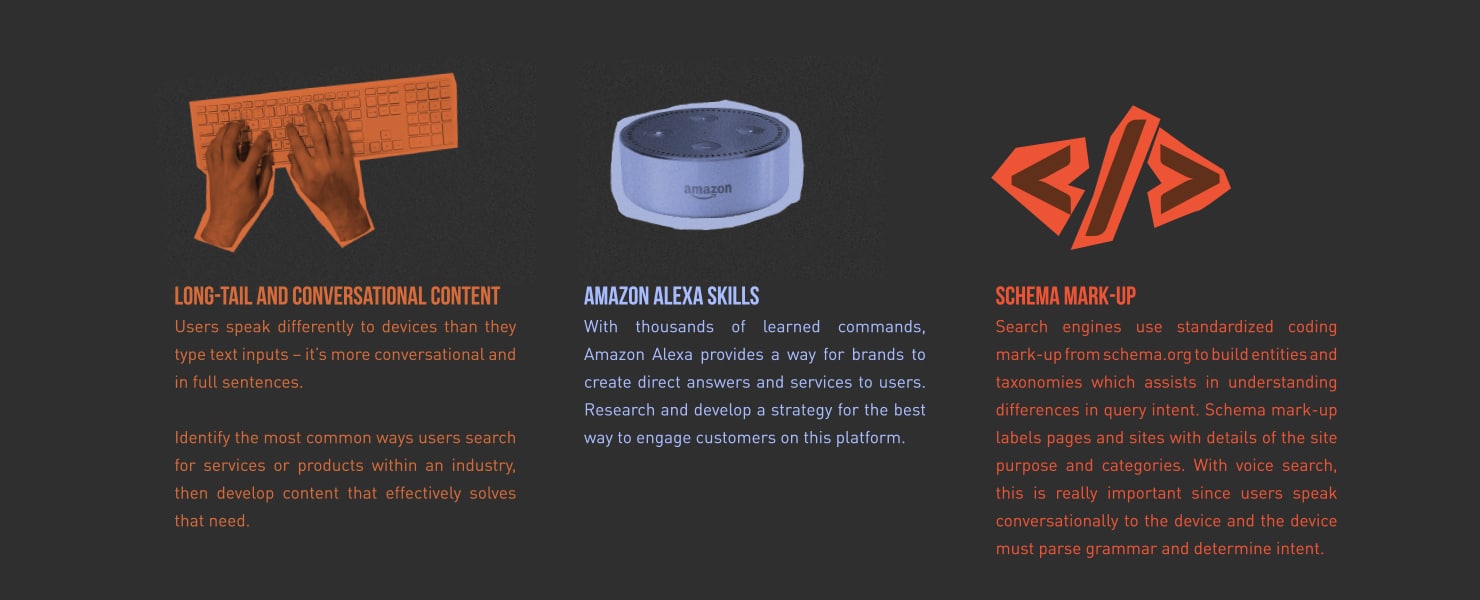The Technicalities Of Dynamic Content

Consumers have a barrage of content thrown at them anytime they open the internet, and they’ve gotten good at ignoring anything that doesn’t particularly peak their interests. Generic headlines and stock images don’t warrant a second glance, much less a scrolling read. Personalizing content to a target audience’s interests is the best way to gain – and hold – attention.
While it might sound like a lot of work, with some guidance, adding personalized media to a user flow can ease sales and digital efforts.
Adding personalization starts by identifying the target audience through cookies, shopping habits, site tracking and other user behaviors to provide customers the best, personal experience.
Media + Social
Let’s start with an obvious statement: People like to shop. It doesn’t matter if they’re buying a pair of shoes, purchasing a bottle of bourbon or searching for a connector for their custom computer.
Dynamic retargeting delivers personalized advertisements to customers based on the specific products or services they’re interested in buying. In return, customers remember brands and their products, services, and ease of use.
This isn’t about being creepy. Like most great advertising tactics, this is about mattering more and providing them a convenient way to get back to that cart they abandoned.
Localization
HBO’s hit show Silicon Valley made a hilarious parody making fun of tech’s love for catchy buzzwords like “Social” “Local” “Mobile” or their little abbreviations – SoLoMo, LoMoSo, MoLoSo, etc. It’s only funny because it’s true.
That episode aired four years ago, but marketers and techies alike are still viewing the world through that lens.
Most digital ad platforms offer personalized targeting, but Facebook Ad Manager is still the cream of the crop. Big brands need to act like little brands on social media, utilizing highly-targeted media plans paired with hyper-targeted content calendars serving localized content to the people that care.
National brands don’t plaster themselves on a billboard to say they care about that city. Everyone sees right through it. Instead, they create content that actually matters at a local level, then deliver via an amplified spend on social media that only targets that market. That’s localization, or geographic personalization, at its best.
Web
Analytics can help us tailor aspects on a website, such as product listings or ads, based on a users’ behavior that will offer the most impact.
Content Management Systems can help in this endeavor by taking care of much of the complications. Kentico, for instance, can collect and process a variety of useful data. This can be either given by the user directly through form submissions or obtained through tracking user behavior, like visited pages, purchased products, and searched keywords. Kentico has built-in modules that can access user data to help determine what content would be best for that user. Brands just need to drag-and-drop the respective widget to customize onto the page, select how the widget should display for each targeted segment, and Kentico takes care of the rest.
Basic discoveries, like including the user’s name rather than just “My Account” has been shown to make a web experience more personable and increase customer interaction which then improves click-through rates. Sitefinity is LEAP Agency’s preferred CMS. Their Digital Experience Cloud software provides a plethora of ways to personalize content to the individual user.
Once an audience is in mind — what Sitefinity calls a segment – and an end goal, Sitefinity will ultimately determine the target audience. The CMS itself will track potential customers’ interactions and can determine their region through the web request’s IP address.
Using this, websites could prioritize different options in a dropdown, or provide different copy, per user, designed to appeal to that specific audience members experience on that website.
Emails
Email is one of the most common methods companies today try to reach customers. But with the level of spam and true marketing emails, it can be hard to get noticed.
Emails need to stand out, just like websites. Generic messages won’t succeed in enticing a user to open them, so basic personalization features, like addressing the person directly in the subject line, is a good way to increase open rates. Martech Today quoted a 30 percent increase, thanks to including a recipient’s name in the body email.
Once a potential customer’s attention is harnessed, brands can offer coupons or loyalty programs in exchange for a login, and perhaps some basic information to incentivize data collection.
With some standard information acquired such as age, job, title or gender, brands can then apply that information to see if a user fits with any targeted personas. With a persona matched, users can then expect better, more tailored emails.
For instance, if someone is a developer in New York, a tactic would be to customize an “Events” widget to display events intended for that specific group. Sign-up forms are one of the better direct ways to get user information.
Perhaps a user has said they enjoy learning about new technologies, or a brand has tracked a metric showing they’ve recently purchased a new smart watch, for example. Targeting that person with an email about how a software is pushing scientific limits is much more likely to catch their eye than how baking how-to videos are now daily (though we’d love to watch your science breakthrough themed baking channel more).
Having trigger emails for various events, like not being active on a company’s website for a month, could also bring interest through their custom and timely interaction. Other useful triggers could be a download confirmation with next steps, or alternative products for users that didn’t complete a purchase.
Voice Search
Voice-enabled device adoption has grown substantially over the last several years, as the technology behind voice search has become more accurate and useful.
Amazon Alexa and Google Home, along with mobile assistants Siri, Cortana and Google, are now in billions of pockets and millions of homes. It’s an emerging space for data to be leveraged for personalizing content to deliver users a great experience across multiple devices.
With voice command data, brands can use voice as a discovery and build customer loyalty from returning users.

Cookie cutter messages and default mailing lists just don’t work anymore. People today have such good internal spam filters that nothing but exactly what they want to see even registers anymore. Tailoring content to the user is a great way to direct their attention without being invasive and allows a brand to provide information the user is more likely to care about.
Any CMS worth its salt will provide easy to implement user-data tracking, processing, then personalized suggestions so brands can provide the personalized message most likely to appeal to the correct audience.